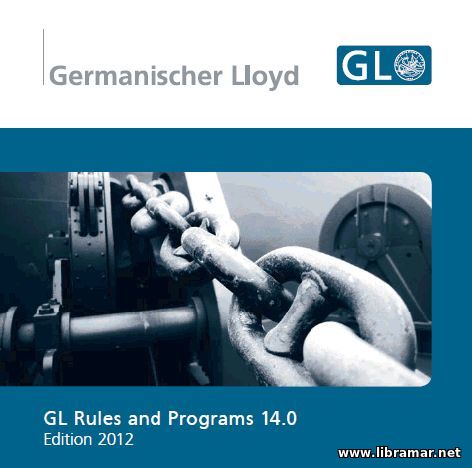Bridge Resource Management

Bridge resource management is such a vital part of the ship safety that it is requirement of the STCW convention and the ISM Code. It is a method which uses all resources available to conduct safe and efficient vessel bridge functions. These resources include both equipment and personnel. It takes both traditional skills to operate the equipment as well as managerial skills to use personnel resources to their potential. In order to best utilize personnel o board your vessel, you must understand the human factors involved. These include communications, situational awareness, stress, fatigue, leadership and decision making, and group dynamics and integration.
The NTSB has determined that human factor contributed to 75-80% of all marine casualties. That is why the STCW has made a requirement that all shipboard officers must demonstrate an understanding of the concepts which constitute effective Bridge Resource Management. Note that it is important to establish good vertical communication including making sure to include unlicensed personnel.
unlicensed personnel.
The bridge personnel’s performance is essential to the safety of the vessel. In order to achieve a sound and efficient bridge organization, defined procedures including Master’s standing orders are essential. Procedures shall be established to ensure duties are clearly defined and assigned to certain individuals. Effective procedures will minimize the risk that an error by one person will have disastrous and irreversible consequences. No one should be assigned more than they can handle, and no duty should be re-assigned without notifying the watch officer.
A visual lookout should always be maintained. In good visibility, it is good practice to periodically undertake collision avoidance routines in order to be fully prepared if difficult situations subsequently arise  and reduce visibility.
and reduce visibility.
To cope with the workload and risks, specific watch conditions should be established for restricted visibility, heavy traffic, and pilotage conditions. It is important to make sure that all equipment needed is available and functioning. If equipment is not functioning, its limitations and errors should be correctly applied. Pilots are valuable addition to the bridge team; there must be a good exchange of information between the pilot and the bridge team so each is aware of the other’s intentions.
In assigning duties, careful consideration should be given to the ergonomic layout of the bridge. The concept of the zones and responsibility takes this into consideration and duties are assigned so that personnel are not interfering with each other but can share critical information. Checklist should be used but not treated as a substitute to the thorough knowledge of the ship or procedures. Checklists have many benefits, such as focused attention at the task at hand, helping to establish priorities, serving as an aid against failure of human memory, helping to balance the workload, and eliminating guesswork by instituting standard procedures. The STCW convention requires that new crew members be given familiarization training prior to assuming any duties, and Masters and mates have knowledge of Bridge Teamwork Principles.
Pilot and Bridge Team Integration
The SCTW convention clearly defines the relationship between the pilot, Master, and the officer in charge of navigational watch. Despite the duties and obligations of pilots, it is important to remember that their presence on board does not relieve the Master or officer in charge of navigational watch from their duties and obligations for ship safety.
Because of this, an open low of information on the bridge between the pilot and the bridge team is essential. The bridge team must be aware of the difficulties and constraints of the pilotage area and the pilot must be aware of the characteristics and the particulars of the ship. When a pilot is aboard, it must become part of cooperation effort working with the bridge team.
Voyage Planning
Actual formation of the voyage plan begins with appraisal, which is the process of gathering together all data related to the contemplated voyage, it should include navigational information, shown on charts and found in publications; references should also be made to climatic data and meteorological information.
Having made the most complete appraisal possible, the navigation officer must submit it to the Master and then prepare a voyage plan, following the Master’s instructions. The plan should embrace the entire voyage from berth to berth, and include provisions for execution – waypoints and narrative descriptions of what to do and when to do it.
Monitoring is necessary to ensure that the plan is followed accurately – it should include parallel indexing, head marks, and danger bearings. A complete voyage plan may also be useful documentation for future reference.
 Situational Awareness and Error Trapping
Situational Awareness and Error Trapping
Situational awareness is an accurate perception of the factors and conditions that affect the ship and the crew during the specific period of time. When we lose situational awareness, we increase the potential of human error. The complexity of operating a modern-day vessel and the interactions within and outside the bridge team provide the opportunity for errors.
Accidents are rarely caused by a single event – it is usually a sequence of chain of events that cause an accidents. Breaking an error chain, or error trapping, is essential in preventing accidents. All bridge team members must be able to identify error chains and be encouraged to take corrective actions and speak out.
Communication
It is the exchange of information, thoughts or feelings. The most effective communication is face-to-face, enabling you to receive visual as well as spoken information. Verbal communications include all types of radio- and telephone communications. It is important to choose the words carefully, and speak them loudly, clearly and concisely. The least effective communication is written.
visual as well as spoken information. Verbal communications include all types of radio- and telephone communications. It is important to choose the words carefully, and speak them loudly, clearly and concisely. The least effective communication is written.
The sender should be conveying the information necessary for the mission accomplishment and must be pro-active in making receiver understand the message. The message should consist of correct terminology and be clearly sent to receiver. The receiver should be acting in the process and give feedback which can include acknowledgement, repeat, or paraphrasing. Once the receiver has given feedback, the communication process is completed when the sender acknowledges it.
Stress
In understanding the relationship between stress and performance, it is important to consider the effects of stress on the body.  There are three stages associated with stress, namely the state of alarm, resistance, and exhaustion. The initial state of alarm takes the body by surprise, and the ability to cope with the stress is reduced. As the body fights, or resists, the original source, the symptoms gradually disappear and the body adapts to the higher level of stress; but the ability to cope with other stress lowers. Eventually, we are unable to cope with the original stress, and exhaustion occurs when the body’s resources have been depleted.
There are three stages associated with stress, namely the state of alarm, resistance, and exhaustion. The initial state of alarm takes the body by surprise, and the ability to cope with the stress is reduced. As the body fights, or resists, the original source, the symptoms gradually disappear and the body adapts to the higher level of stress; but the ability to cope with other stress lowers. Eventually, we are unable to cope with the original stress, and exhaustion occurs when the body’s resources have been depleted.
No all stress is bad. Studies show that the body performs best when under moderate stress. Too little stress causes boredom and complacency, while too much stress diminishes situational awareness and can cause panic. Good bridge team leaders will not only deal with stress within them but will also perceive and accommodate stress in other team members. This includes reducing the individual’s workload, or assigning tasks based on ability and experience.
Fatigue
It is defines and weariness or exhaustion from work, over exertion, inadequate sound sleep or the cumulative effects of poor sleep over several days. Fatigue slows visual perception, decision making, mental arithmetic, and impair memory recall. The counter  measures include preventive and operational strategies. Preventive strategies are used before and between duty periods; this includes getting the best possible sleep before reporting on board. However, if you wake spontaneously and cannot go back to sleep within 15 to 30 minutes, you then get up. Studies also show that the naps can improve performance – naps before duty period should be limited to 45 minutes while at other times may take more than two hours. The operational strategies, in turn, would include physical action, conversation on professional topics, strategic caffeine consumption, balanced nutrition, staying well hydrated etc.
measures include preventive and operational strategies. Preventive strategies are used before and between duty periods; this includes getting the best possible sleep before reporting on board. However, if you wake spontaneously and cannot go back to sleep within 15 to 30 minutes, you then get up. Studies also show that the naps can improve performance – naps before duty period should be limited to 45 minutes while at other times may take more than two hours. The operational strategies, in turn, would include physical action, conversation on professional topics, strategic caffeine consumption, balanced nutrition, staying well hydrated etc.
Leadership and group decision making
The promotion of bridge resource management is based on the concept of synergy, described as the situation where the total of the individuals in cooperation is greater than the sum of the individuals taken by themselves. The best leaders share the information, communicate openly and encourage participation; they respect others and are able to share workload. Maintaining a constructive and positive attitude and keeping a receptive atmosphere coupled with honesty are necessities of productive leaders.
Decision making is an essential skill for operational team leaders. Team members participate in the problem solving process by contributing timely and valuable information to the team leader. To make a positive decision, information must be gathered and cross-checked.
The "Read Later" function allows you to add material to this block with just one click. Just click on the icon and read the articles that interest you at any convenient time.


